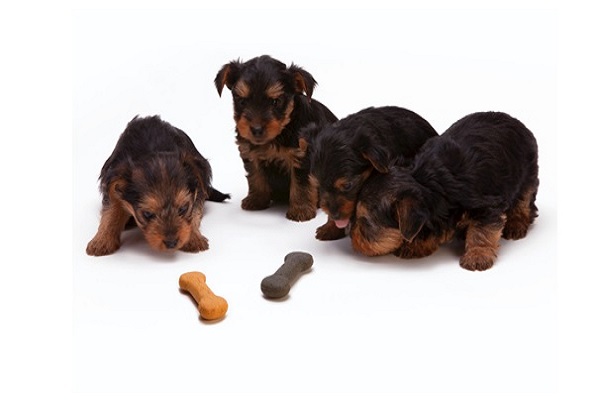
Home » How to Comfort a Dog in Pain
As a pet owner, it’s your job to keep your dog pain-free
As a human, you have several ways to communicate with other people that you’re in pain. You complain about a painful back. You scream at the top of your lungs when you step on something sharp. With dogs, however, it isn’t as easy to tell that they’re in pain.
Despite your dog’s inability to open its mouth and speak to you using words, your dog has other ways of showing that they’re in pain.
If you’re worried your dog might be in pain, and you’d like to do whatever you can to comfort them, read on below.

Few dogs will let you know that they don’t feel alright. They might yip, bark, or act panicked. Most dogs, however, act stoically. These dogs may be unable to tell you they’re in pain. For these dogs, you’ll have to look out for subtle signs.
Vocalizing (barking, growling, etc.) is natural for dogs. When they begin to vocalize more than usual, however, there might be something wrong. If your dog is whining, yelping, whimpering, and snarling more often, you’ll want to keep a closer eye on your dog.
Dogs in pain often lick their paws. It’s their way of soothing themselves. As intelligent animals dogs clean and care for wounds by licking the painful area.
Dogs licking their wounds is an obvious sign of pain if the wound is visible, like a cut. If your dog’s problem is internal, dogs will still lick the painful area to soothe themselves. Dogs will also lick their paws and then rub their eyes if they have eye pain.
Most dogs will sleep longer than usual when they’re in pain. Your dog may be sleeping more because they’re trying to heal, or it’s too painful to move around. Likewise, changes in your dog’s appetite should be something to look out for.
Is your dog panting even though she’s at rest? Is your dog’s breathing more shallow than usual? These are some signs that your dog feels pain every time they breathe.
Dogs that squint frequently may be experiencing eye pain. A dog with eye pain may also have smaller pupils than usual. If your dog is experiencing pain in parts of the body other than the eyes, their pupils may enlarge.
If your dog is in pain, it may be difficult to sit or lie down. If you see that your dog is restless and has trouble staying put, it may be a sign that your dog’s in pain. For example, your dog might immediately get up as soon as they try to sit or lie down.
Some dogs who aren’t feeling well may begin to withdraw from interacting with others. Some dogs might even hide in a corner. Conversely, other dogs will be all over you and will seek affection constantly. The important thing is that you notice that your dog is acting differently.
Also See: Keeping Dog’s Paws Free From Infection – Everything You Need to Know

If you’ve observed any of the signs we mentioned earlier and think your dog is in pain, don’t panic. You have many options that can help your dog feel better.
If your pet is showing signs of pain during physical activities, take a break.
You can make small changes to the type of activities you do with your dog. You and your dog can take shorter walks, play for shorter amounts of time, etc. If your dog still experiences pain signs, consider having your dog take a complete break from physical activities for a few days.
Nonsteroidal anti-inflammatory drugs (NSAIDs) help reduce swelling, stiffness, and joint pain. You may already be using these drugs for yourself. Luckily, these drugs can also provide your dog with similar pain relief.
However, it’s important not to give your dog something from your medicine cabinet, such as ibuprofen or acetaminophen. You’ll want to give your dog drugs made specifically for dogs, such as:
Supplements, such as chondroitin and glucosamine, are popular alternative pain treatments for dogs. Some research found that these supplements reduce swelling and help cartilage repair itself.
Ginger is excellent for pain relief. First, it’s convenient, since you may already have ginger in your kitchen.
Second, ginger is effective. It’s well known for its benefits to the digestive system. However, it is also great for easing arthritic pain.
Ginger treats arthritic pain by stopping the immune system from creating leukotrienes. Leukotrienes, after all, are responsible for causing inflammation. Ginger is also fantastic for increasing circulation in older dogs who lack mobility.
Cannabidiol (CBD) oil is an extract from the cannabis plant. No, it won’t get your dog “high.” Some CBD products contain THC. However, the THC in CBD products only serves to increase the potency of the product; it doesn’t produce mind-altering effects.
CBD oil for dogs works by signalling your dog’s neurotransmitters in the endocannabinoid system. Simply put, CBD produces feelings of pain relief in your dog.
Also See: 10 Common Mistakes That Shorten Your Dog’s Life

If your dog is experiencing mild pain, the treatments mentioned above should be sufficient. If the recommendations above didn’t work for your dog or if your dog is experiencing extreme pain, you should bring them to the vet.
Your vet will be able to determine the cause of your dog’s discomfort. Your vet will also be able to decide on the right treatment for your dog’s situation.
Common issues that cause dogs to feel pain include:
Your dog is your best friend, so you’re the one person who knows your dog best. If you think your dog is acting strangely, don’t dismiss the unusual behavior. Trust your gut and act accordingly.
Also See: Is CBD Oil Good For My Dog?



